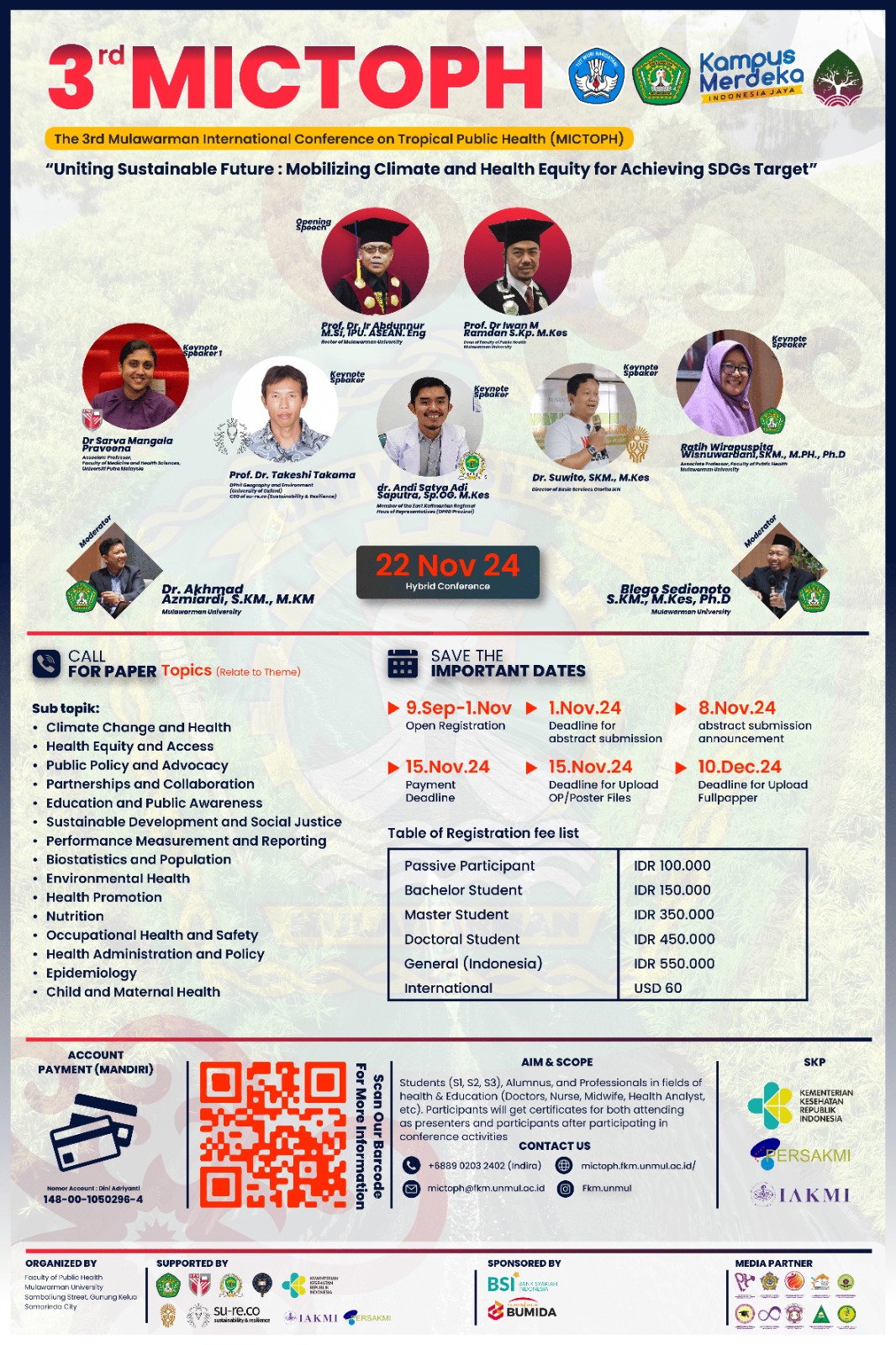The Role of Healthy Village Homes in Alleviating Stunting in Sukaraja Village, East Kalimantan
Keywords:
Stunting, Infants and Toddlers, Supplementary FeedingAbstract
Background : The degree of public health reflects the health condition of an area which can be measured through morbidity, mortality and nutritional status. In Indonesia, nutritional problems in children under five are still a priority national health problem which is characterized by the prevalence of stunting (21.6%), wasting (7.7%), and underweight (17.1%) and overweight (3.5%) high enough. Therefore, special efforts are needed through community empowerment in order to eradicate stunting.
Objective : The aim of implementing the program is to educate the public, especially mothers of babies/toddlers, regarding preventing stunting and the importance of providing nutritious and balanced food intake for babies and toddlers. As well as a form of stunting alleviation through PMT (supplementary food provision). Research Methods/ Implementation Methods : This program uses methods in the form of counseling related to stunting prevention and providing varied PMT as well as providing pre-tests and post-tests to measure participants' knowledge and at the end of the activity, this program continues with PMT (Provision of Supplementary Food) for target toddlers. Results : This activity was held on June 14 2024, attended by 21 participants, mothers of babies and toddlers. Based on the results of the pre-test, the percentage is 76% and the post-test is 96%.
Conclusion/Lesson Learned : Through the RDS (Healthy Village House) program, it provides increased knowledge regarding the importance of fulfilling nutritional intake for babies and toddlers to prevent anemia, which is shown by an increase of 20%. And the existence of PMT (Additional Food Provision) also indirectly helps in fulfilling the nutrition of babies/toddlers.





